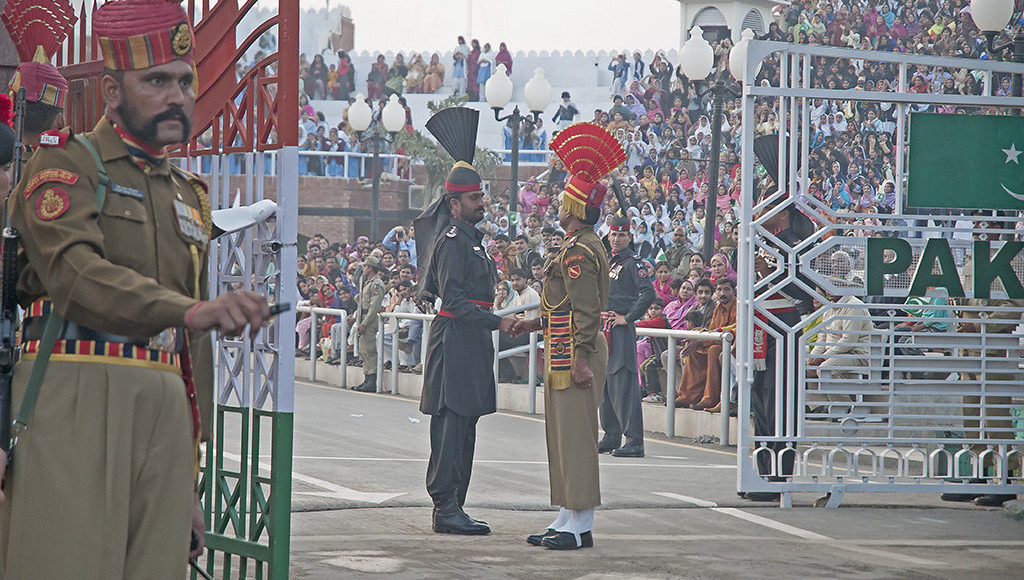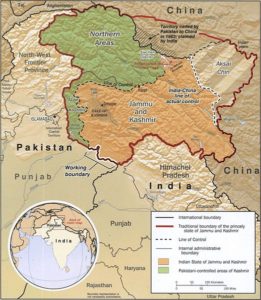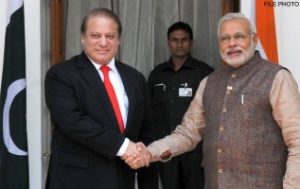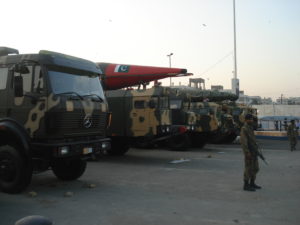The South-Asian Tinderbox: Rising Tensions and U.S. inaction in the Sub-Continent

With the eyes of the world fixed on Kim-Jong Un and Donald Trump’s war of words, another serious escalation has been playing out along the world’s most dangerous border: that between India and Pakistan. The nuclear-armed neighbors share a long, violent history ever since the end of British colonial rule in 1947. Unsuccessful in letting go of the baggage brought by the partition of Greater India, they have fought four brutal wars since independence. While the three earlier wars (in 1948, 1965 and 1971) were large-scale and fought with conventional weapons, the most recent conflict in 1999 was limited to clashes in the high-altitude Kargil region, out of fear of nuclear escalation. Both countries had by then developed and publicly flaunted their nuclear arsenal, irrevocably changing the dynamics of the Indo-Pak conflict. The incredibly high risk of a nuclear war between the two neighbors is now an unfortunate reality.
This recent escalation comes on the heels of a militant attack on an Indian military base in Uri in which 18 Indian soldiers were killed by Kashmiri separatists almost a year ago. India claims Pakistan supports the rebels with financial and logistical support. India’s hardliner Hindu Nationalist leader, Narendra Modi, announced that “those behind this despicable attack will not go unpunished”. Pakistan, naturally, denies the charge and puts the blame on India’s brutal occupation of the Kashmiri people that has led to an indigenous separatist movement against Indian rule.

This image is public domain.
Largely ignored by the international media, the situation along the Line of Control (LoC), the de facto border separating Pakistani-administered Kashmir from Indian-administered Kashmir, is at its worst in more than a decade. More than 222 innocent civilians have been killed in the last few months with hundreds more injured including women and children, according to the Pakistan army’s media wing. In press briefings, videos distributed by militaries on both sides show enemy bunkers being targeted and dismembered. Regular skirmishes on the ground have been matched with steady diplomatic offensives, and tensions are at the highest since the 2002 India-Pakistan standoff.
At the recent UNGA summit in New York, where all the attention was focused on U.S. President Donald Trump’s maiden speech and in particular his diatribe against the ‘rogue’ North Korean regime, the historic sub-continental rivalry was on full show. Both Pakistan and India took to the United Nations to make their case in front of the world. Newly appointed Pakistani Prime Minister Shahid Khaqan Abbasi went first, and berated India for its heinous human rights violations in Kashmir, accusing it of brutally suppressing the Kashmiri independence movement using draconian tactics such as pellet guns. Abbasi also urged the U.N Secretary-General to appoint a special envoy for Kashmir to investigate these crimes.
Irked by the Pakistani Prime Minister’s effort to rekindle the Kashmir issue, Indian foreign minister Sushma Swaraj called Pakistan an “export factory for terror” and a menace to the region. This sharp rebuke evoked a strong response from Pakistan’s U.N Ambassador Maleeha Lodhi who stated that it is, in fact, India, which is the “mother of terrorism” in the region and was helping to destabilize her country through the use of proxies in Pakistan’s restive province of Baluchistan. Another statement by the Indian Air Force chief where he threatened to take out Pakistan’s nuclear facilities, sent alarm bells ringing on both sides of the border. Though both countries routinely hurl threats and allegations at each other (much to the appeasement of their jingoistic masses) this particular exchange by top-level officials, even by Sub-continental standards, is certainly alarming.
The United States, meanwhile, which has traditionally played the role of key mediator in the Indo-Pak conflict, is nowhere to be seen. With the Trump administration trying to contain North Korea and with a President besieged at home, the White House seems too preoccupied or perhaps even unwilling to continue playing its role as ‘policeman’ of the region.

Past U.S. presidents have played a pro-active role in defusing tensions between India and Pakistan, and at times have even personally intervened in to avert nuclear catastrophe. It was, after all, President Clinton who helped bring out an end to the Kargil conflict with the Washington Accord in July 1999. Similar personal efforts by President Bush helped to defuse tensions and lead cooler heads to prevail during the 2002 Indo-Pak standoff. President Obama, too, entrusted his special envoy the late Richard Holbrooke to help ease off tensions and encourage dialogue between the two neighbors in the aftermath of the 2008 Mumbai attacks. This time, however, no such initiative has so far been seen from the White House.
On the contrary, recent U.S. actions have done more to exacerbate Indo-Pak tensions than to defuse them. The United States, under President Trump, has offered India a greater role in Afghanistan; much to the unease of the Pakistani establishment, which sees Afghanistan as its backyard. Increased Indian presence in Afghanistan is a nightmare scenario for Pakistan out of fears of being ‘sandwiched’ and strategically encircled by hostile states on both sides. Furthermore, in another nod to India, the U.S. has also voiced concern about the much-hyped China-Pakistan Economic Corridor (CPEC), that Pakistan views as a transformational economic package desperately needed to boost its dwindling economy. The corridor crosses through Pakistan’s Northern Gilgit-Baltistan region (claimed by India) and a recent statement by U.S. Secretary of Defense General Mattis stating that the corridor passes through ‘disputed’ territory is bound to further rattle the Pakistanis. Such actions and statements, which seemingly pitch the balance of power in India’s favor, are counterintuitive to peace in the Sub-Continent.

Peace between India and Pakistan is in the greater interest of the United States, not just to avoid a nuclear exchange that could potentially plunge the world into nuclear Armageddon, but also vis-à-vis Afghanistan where both India and Pakistan are major stakeholders and behind-the-scenes players. Insecurity in the Sub-Continent is detrimental to American strategic interests and its endgame for the long-drawn Afghan conflict. As long as Pakistan continues to be threatened by India and vice-versa, both countries will meddle and hedge their bets in Afghanistan, threatening a peaceful resolution to the war. Therefore, in a way, the key to the Afghan quagmire might also lie in the resolution of the Kashmir dispute. Reproachment is also necessary for the sake of human rights of millions of Kashmiris, who have been at the receiving end of the worst form of state brutality and repression.
It is imperative for the United States, President Trump in particular, to carry on the policy of engagement with New Dehli and Islamabad, in an effort to restore trust between the two neighbours. Preferential treatment for one party and continuous ostracizing for the other will have the opposite effect and so will turning a blind eye to this impending crisis. Rather, the U.S. needs to step up its diplomatic efforts and use the strategic leverage that it has over both India and Pakistan to nudge them towards dialogue. Strong U.S. leadership and engagement in South Asia, and not isolationist politics, is the need of the hour.
“India Pakistan Border Wagha” by Koshy Koshy is licensed under CC BY 2.0.
This article has been edited by Sarie Khalid
